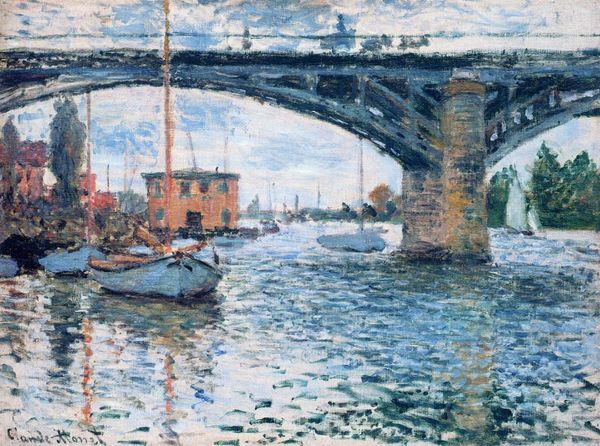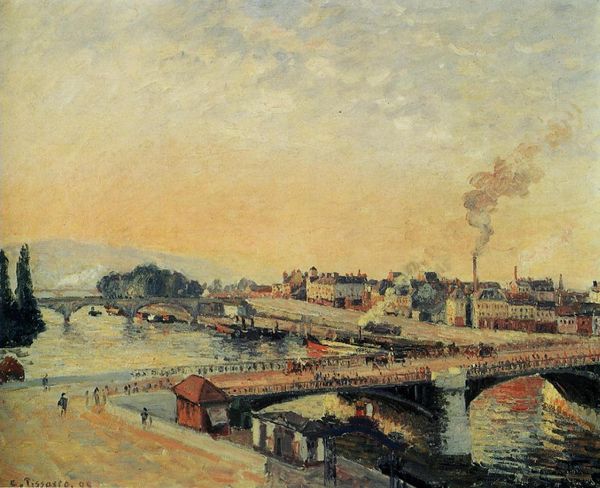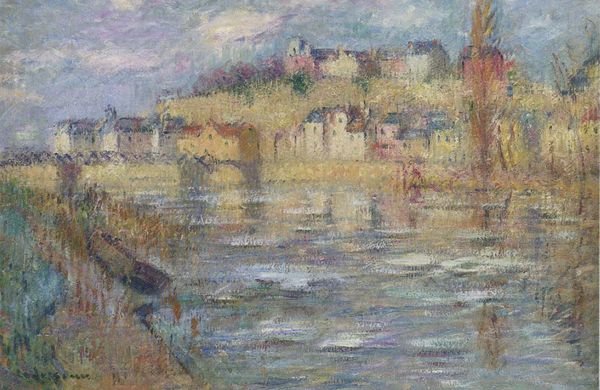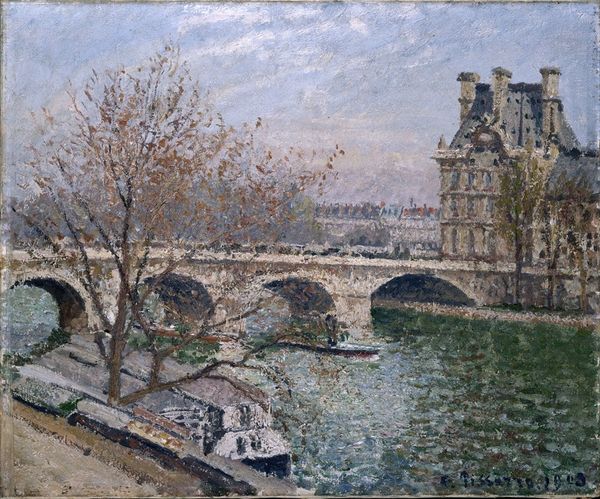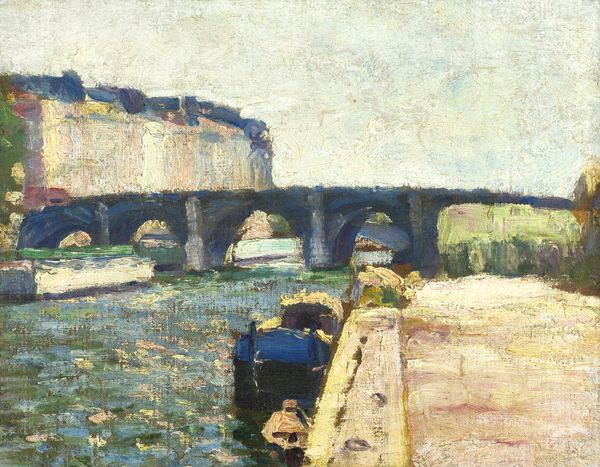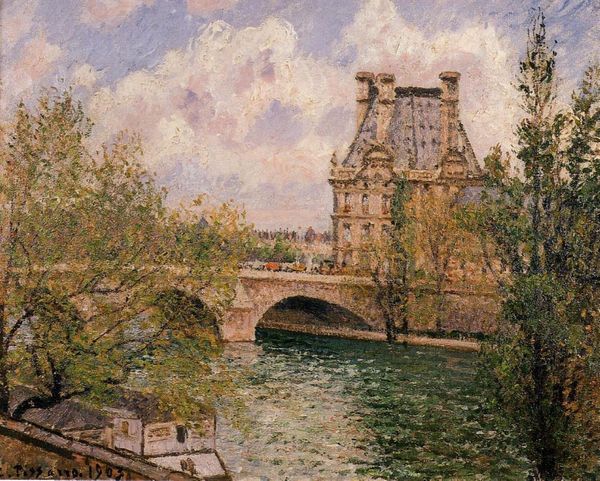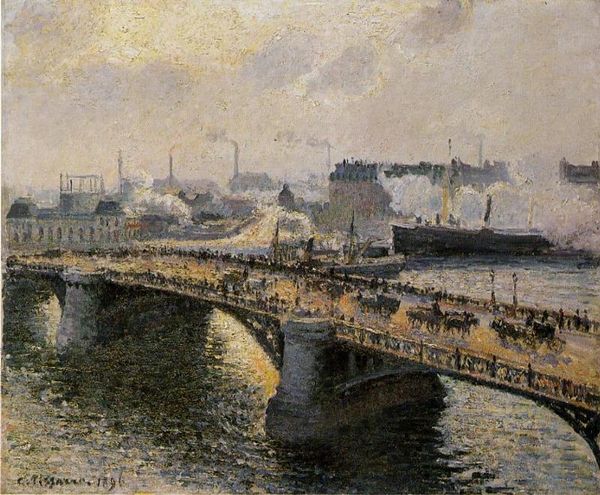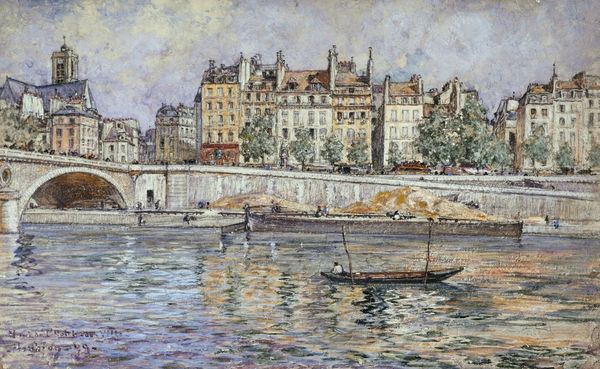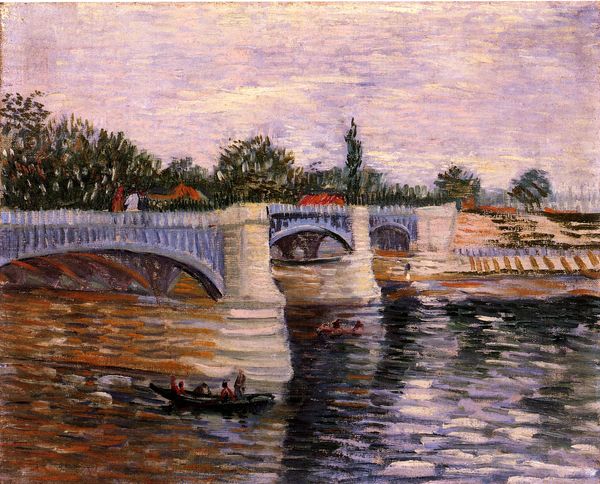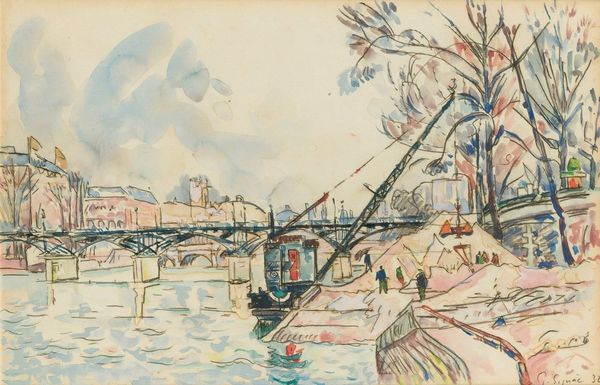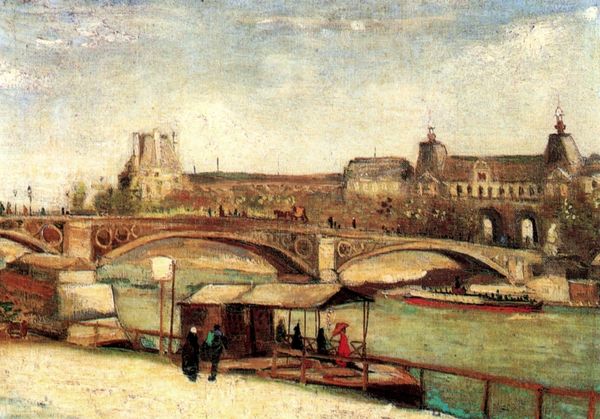
Copyright: Public domain
Curator: Gustave Loiseau's "Pont Neuf in the Snow," painted in 1922, captures a cityscape draped in winter's quietude. What are your initial thoughts? Editor: It's a muted symphony of whites, greys, and browns. The bridge feels imposing, almost melancholic. The brushwork adds a sense of movement, yet it's a scene of stillness. It speaks volumes about the alienation of modernity after the first World War, doesn’t it? Curator: Indeed, the material process and the final appearance subtly mirror that period's uncertainty. The visible brushstrokes, a characteristic of Impressionism, become less about capturing fleeting light and more about constructing a fragmented reality. I’d add that, unlike most of his Impressionist peers, Loiseau rarely depicted laborers, even though his imagery inherently required work, from his canvases to paint, etcetera. It does raise questions of production in this context. Editor: That's a pertinent observation. Perhaps he aimed to isolate the architecture, divorcing it from its everyday utility to become an object of contemplation. Think about how that bridge connects spaces, classes, lives and, during wartime, divides them… By removing signs of people, he is creating a more politically salient narrative about the social fabric of Parisian life. This aligns with wider postwar movements seeking to understand shifts in national identity. Curator: His deliberate color palette speaks volumes too. The restricted use of color emphasizes the stone, and evokes the built environment but at a time of economic uncertainty. Loiseau seems to prioritize capturing a distinct urban ambiance as opposed to depicting any particular economic class within Paris. The scene has a very tactile element through its medium. Editor: Yes, Loiseau’s painting serves as more than just a beautiful representation of place, the muted tones, the empty streets—everything seems to point to a sort of collective anxiety. What do you think it signifies within his broader body of work? Curator: Looking at his larger body of work, this depiction feels consistent. The repetitive depictions of certain landmarks over his artistic production allowed him to delve deeper into questions about industry and craft that were very timely to discussions during that era in Parisian circles. He focused on materiality—more specifically how urban settings shaped public emotion and identity during post-war life. Editor: I see. Well, this journey through "Pont Neuf in the Snow" underscores how landscapes, seemingly passive subjects, carry deep cultural resonance. It challenges us to look at the construction of landscapes with different social perspectives and question their production. Curator: Indeed. It pushes the viewer to consider how artists in Loiseau’s era were using landscape painting to work through contemporary feelings about modernity.
Comments
No comments
Be the first to comment and join the conversation on the ultimate creative platform.

